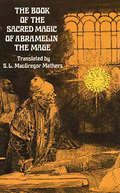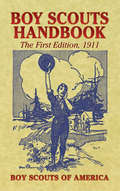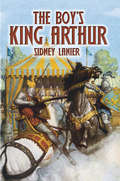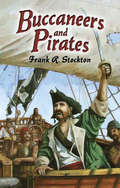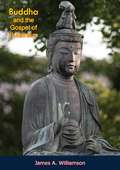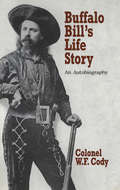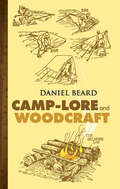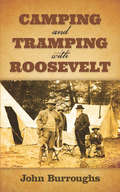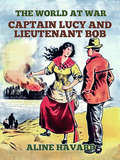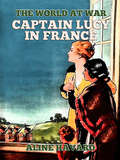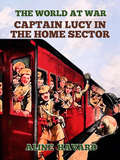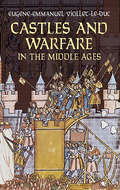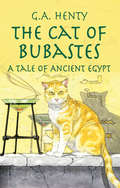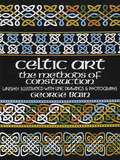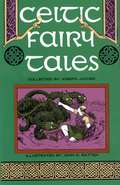- Table View
- List View
The Book of the Sacred Magic of Abramelin the Mage
by S. L. MathersAround the turn of the century, when Aleister Crowley was working out his system of Magick, the source that he turned to for basics was the system of Abramelin of Egypt. From Abramelin he took his concepts of protections, purifications, evocations, vestments, and dromena down to specific details.This system of Abramelin the Mage is known from a unique fifteenth century manuscript preserved in the Bibliothèque de L'Arsenal in Paris. In it, Abraham of Würzburg, a cabalist and connoisseur of magics, describes a tour that he made of the then civilized world, visiting sorcerers, magicians, and cabalists, estimating their powers and virtues. This quest is in itself as fascinating as the similar tours of Gurdjieff.The high point of Abraham's travels was found in a small town on the banks of the Nile, where he encountered the great magician Abramelin, whose complete system Abraham thereupon sets out in detail. This amounts to a complete course in ceremonial magic (both white and black), which the student can pursue by himself.Abramelin, whose system is based mostly on Hellenistic theurgy of the Iamblichan sort, but with Jewish increments from the Cabala, explains the qualifications needed to become a magician, purifications, and asceticisms to be practiced month by month, studies and activities permitted during this period, selection of place and time for working magic, equipment needed, prayers and formulas, evocation of good and evil spirits, commanding spirits to do one's will, overcoming rebellious spirits, and similar material. Specific instructions are offered to develop such powers as clairvoyance, divining metals and treasures, warding off evil magic, healing illness, levitation, transportation, rendering oneself invisible, creating illusions and glamour, reading minds, placing compulsions, working black magic, and a host of other abilities.We do not guarantee that Abramelin's techniques work, nor that the results are desirable, but we offer this as a genuine medieval course in magic, one of the most important books in the history of occultism. It is of paramount importance to both the historian and the practitioner.
The Book of the Sword: With 293 Illustrations
by Richard Burton"The history of the sword is the history of humanity." With these words, British author, Victorian scholar, and world traveler Richard Burton begins his eloquent and exceptionally erudite history of the "Queen of Weapons."Spanning the centuries and a wide range of cultures, Burton's rich and elegant prose illuminates the sword as both armament and potent symbol. For nearly all peoples of the world, the sword embodied the spirit of chivalry, symbolized justice and martyrdom and represented courage and freedom. In battle, it served universally as a deadly offensive weapon.Drawing on a wealth of literary, archaeological, anthropological, linguistic, and other sources, the author traces the sword's origins, from its birth as a charred and sharpened stick, through its diverse stages of development, to its full growth in the early Roman Empire. Recounting man's long association with this weapon, the author describes in brilliant detail:The ages of wood, bone and bornThe appearance of stone swords and exotic weapons such as the boomerangThe ages of copper and alloys such as bronze and brass — used in producing the long, narrow blades of rapiersThe Iron Age during which the Viking sword of carbonized iron took shape — a weapon whose form would set the standard for the next thousand years.Enhanced by nearly 300 excellent line drawings, the text provides an incredible wealth of detailed data about the sword and its variations: sabre, broadsword, cutlass, scimitar, rapier, foil, and a host of other arms, including dirks, daggers, throwing knives, flails, and much more.Military and social historians, scholars and students of weaponry, as well as armchair adventurers will find this volume a fascinating, abundantly illustrated and highly readable account of this potent symbol of power.
Boy Scouts Handbook: The First Edition, 1911 (Dover Books On Americana Ser.)
by Boy Scouts of AmericaRead by presidents, scientists, and national heroes, the Boy Scouts Handbook has been used by generations of American youths. Filled with practical advice for everyone, the book contains everything from safety tips on swimming and instructions for putting up a tent to directions for making an aquarium and pointers on how to identify common North American trees.More than 200 figures and illustrations accompany valuable information on woodcrafting, camping, sailing, hiking, health and endurance, and providing first aid. But more than just a guide to outdoor life, the handbook also offers timeless observations on politeness, patriotism, and good citizenship.As useful and valid today as it was when first published nearly 100 years ago, the Boy Scouts Handbook will delight Americana enthusiasts as much as it will be treasured by collectors and nature lovers.
The Boy's King Arthur: Being Sir Thomas Malory's History Of King Arthur And His Knights Of The Round Table - Primary Source Edition (Dover Children's Classics)
by Sidney LanierThis rousing collection of tales offers readers an adventure-packed introduction to the legendary King Arthur and his Knights of the Round Table. Retold by the famous American poet and writer Sidney Lanier, the stories are adapted from Sir Thomas Malory's Le Morte d'Arthur, written in the15th century. The tales are told in the style and language of the original. Readers will thrill to the glorious adventures of Arthur and his knights: the mysterious birth of Arthur, how Arthur pulled the sword from the stone to become King of England, Sir Percival's search for the Holy Grail, the tragic romance of Tristram and Isolde, Launcelot's gallant battle to save Queen Guenevere from a death sentence, and Arthur's final struggle with the evil Sir Mordred. These stories capture the age-old drama and romance surrounding the fabled king and his followers, all sworn to uphold lofty ideals of courage, honesty, loyalty, and devotion. This inexpensive volume invites a new generation of readers to enjoy these time-honored tales of gallant knights and fair ladies. These stories have inspired numerous film adaptations, including the 2017 release King Arthur: Legend of the Sword, directed by Guy Ritchie and starring Charlie Hunnam, Jude Law, Eric Bana, Djimon Hounsou, and Annabelle Wallis.
The Bride of Lammermoor
by Walter ScottEdgar, the brooding young master of Ravenswood, retains none of his ancestral estates but a crumbling castle. Embittered by the lawsuits that have stripped him of his patrimony and shortened his despairing father's life, he determines to confront Sir William Ashton, the lawyer whose machinations led to the decline of Ravenswood's fortunes. But Edgar's plans take an abrupt turn upon meeting Sir William's lovely daughter, Lucy, and a romance blossoms against the tumultuous backdrop of the two warring families.Sir Walter Scott's immensely popular Waverly novels enthralled readers with their dashing mix of historical fiction, romance, and revenge. This installment, originally published in 1819, takes place in the early 1700s amid Scotland's Lammermuir Hills. Edgar and Lucy's troubled relationship — beset by social, political, and religious barriers — reflects Scotland's struggles in the early 18th century, as the country and its citizens were torn asunder by the Jacobite rebellions. Scott's treatment of the lovers' inexorable destiny unfolds in a gothic atmosphere, punctuated by supernatural elements and symbolic imagery. The inspiration for Donizetti's opera Lucia di Lammermoor, this novel remains a compelling example of its author's ability to transmute the effects of historical change into literary art.
A British Rifleman - the Journals and Correspondence of Major George Simmons, Rifle Brigade, during the Peninsular war and the campaign of Waterloo
by Lt.-Colonel Willoughby Cole Verner Major SimmonsThe journals and correspondence of George Simmons add a further lustre to the excellent memoirs and books that men of the 95th Rifles left of the adventures, hard fought actions and grim experiences of the Peninsular War and the Waterloo Campaign. Simmons was commissioned into the 1st Battalion 95th Rifles, a fellow officer of Sir John Kincaid and Sir Harry Smith both of whom left valuable memoirs of the period. A religious and upright man, although not priggish, he kept a journal of the actions movement and events of his life and sent numerous letters home to his family in Hull. These form the narrative which has been ordered by Lt. Col. Verner to flow in sequence through his time fighting Napoleon’s forces.Simmons, and his brothers who often crop up in the volume, was at the forefront of the fighting engaged in by the Light Brigade and later Light Division. He was wounded a number of times, once so seriously at Waterloo as a result of a musket wound to the chest, that his attendants though he might die. He took part in the battles of Fuentes D’Oñoro, Salamanca, Vittoria, the Nivelle, Orthez and finally Waterloo. The storming of Badajoz, Cuidad Rodrigo are also described in vivid detail missing nothing of the fear, death and mayhem of the attacking troops; to give just one excerpt of the action:- I saw my poor friend Major O'Hare lying dead upon the breach. Two or three musket balls had passed through his breast. A gallant fellow, Sergeant Flemming, was also dead by his side, a man who had always been with him. I called to remembrance poor O'Hare's last words just before he marched off to lead the advance. He shook me by the hand saying, "A Lieutenant-Colonel or cold meat in a few hours." I was now gazing upon his body lying stretched and naked amongst thousands more.An excellent read, contemporaneously written and abounding with interesting details.Author – Major George Simmons [1785-1858]Editor – Lt.-Col Willoughby Cole Verner [1852-1922]
Buccaneers and Pirates
by Frank R. StocktonTrue tales of history's sea-faring scoundrels and their daring deeds, Buccaneers and Pirates recounts the legends of the notorious brigands who plundered North American coasts from the sixteenth to nineteenth centuries.Meet Blackbeard, who reveled in shooting down members of his own crew; Henry Morgan, the infamous pirate who eventually became Deputy-Governor of Jamaica; and Jean Lafitte, master of an enormously profitable piracy ring — even though he only boarded a ship twice in his life. Recount the horrors of the most infamous buccaneer of them all, Captain Kidd, whose evil exploits continue to raise goose bumps. You'll also become acquainted with a cast of lesser known — but equally intriguing — pirates, including two women whose courage and cunning were a match for any man's.Often humorous, sometimes chilling, yet always fascinating, these authentic stories form a wonderfully readable history of piracy's beginnings and its rapid spread through the coastal waters of the New World.
Buddha and the Gospel of Buddhism
by Ananda Coomaraswamy“THE aim of this book is to set forth as simply as possible the Gospel of Buddhism according to the Buddhist scriptures, and to consider the Buddhist systems in relation, on the one hand, to the Brahmanical systems in which they originate, and, on the other hand, to those systems of Christian mysticism which afford the nearest analogies. At the same time the endeavour has been made to illustrate the part which Buddhist thought has played in the whole development of Asiatic culture, and to suggest a part of the significance it may still possess for modern thinkers.“The way of the Buddha is not, indeed, concerned directly with the order of the world, for it calls on higher men to leave the marketplace. But the order of the world can only be established on a foundation of knowledge: every evil is ultimately traceable to ignorance. It is necessary, then, to recognize the world for what it truly is. Gautama teaches us that the marks of this life are imperfection, transcience, and the absence of any changeless individuality. He sets before us a summum bonum closely akin to the Christian mystic conception of ‘self-naughting.’ Here are definite statements which must be either true or false, and a clearly defined goal which we must either accept or refuse. If the statements be false, and if the goal be worthless, it is of the highest importance that the former should be refuted and the latter discredited. But if the diagnosis be correct and the aim worthy, it is at least of equal importance that this should be generally recognized: for we cannot wish to perpetuate as the basis of our sociology a view of life that is demonstrably false or a purpose demonstrably contrary to our conception of the good.“This book is designed, therefore, not as an addition to our already overburdened libraries of information, but as a definite contribution to the philosophy of life.”—Ananada K. Coomaraswamy
Buffalo Bill's Life Story: An Autobiography
by William Fredrick CodyStirring campfire tales of the Old West animate these memoirs of Colonel William F. Cody, better known as Buffalo Bill. In a personal narrative as thrilling and satisfying as the most colorful fiction, Cody takes readers on back trails through the frontier he knew and loved, a world that changed almost beyond recognition during his own lifetime. His exciting stories of buffalo hunts, adventures among the Indians, stagecoach travel, and riding with the Pony Express sparkle with cameos of historical figures such as Wild Bill Hickok and Generals Sherman, Sheridan, and Custer, the latter of whom he served as a scout. Cody's vivid yarns begin with his frontier boyhood and perilous rides through Indian territory as an 11-year-old cattlehand, and conclude with the glittering triumphs of his Wild West Show, a dramatic re-creation of Indian battles and frontier life that dazzled audiences throughout the eastern United States and Europe. In this book, Cody draws on his own first-hand experience to paint an unforgettable picture of a storied period in American history and his own role in it. Historians and other readers intrigued by tales of the Old West will find themselves spellbound by these lively and readable memoirs. Eight handsome illustrations by famed artist N. C. Wyeth complement the colorful text.
Buffalo Soldiers: The Colored Regulars in the United States Army (Classics In Black Studies)
by T. G. StewardFormed in 1866, the African-American army units known as Buffalo Soldiers acquired near-mythical status for their fortitude and courage. At the outbreak of the Spanish-American War in 1898, the Buffalo Soldiers were among the first units to depart for Cuba. Dr. T. G. Steward, who served as chaplain of the Twenty-fifth Infantry for 16 years, wrote this fascinating firsthand account of the Cuban campaign. Dr. Steward's narrative offers a wide-ranging view of black military history that covers the beginning of the Republic as well as the service of black regulars. Captivating episodes from the Spanish-American War include the rescue of Theodore Roosevelt's Rough Riders, the capture of the stone fort at El Caney, and service by black infantrymen as volunteer nurses in the yellow fever camps. Additional gripping firsthand testimony is provided by long excerpts from the diary of Sergeant Major Edward L. Baker of the 10th Cavalry Regiment, who was awarded the Medal of Honor. Formed in 1866, the African-American army units known as Buffalo Soldiers acquired near-mythical status for their fortitude and courage. This history by a chaplain of the Twenty-fifth Infantry includes firsthand accounts of the Spanish-American War, including the rescue of Theodore Roosevelt's Rough Riders, as well as an overview of African-American participation in prior wars and conflicts.
Bushido: Samurai Ethics and the Soul of Japan
by Inazo NitobeAt the turn of the twentieth century, when Japan was evolving from an isolated feudal society into a modern nation, a Japanese educator wrote this book to introduce the rest of the world to his society's traditional values. Author Inazo Nitobé defines bushido (the way of the warrior) as the source of the virtues most admired by his people; rectitude, courage, benevolence, politeness, sincerity, honor, loyalty, and self-control. In this eloquent work, he explains the influence of the ideals and manners of the martial code and their role in forming the basis of the morals, ethics, and etiquette of Japanese culture, past, and present.This popular and informative book, translated into more than 30 languages since its original publication in 1900, takes an eclectic and far-reaching approach. Nitobé draws examples from indigenous traditions including Buddhism, Shintoism, Confucianism, and the centuries-old moral compass supplied by Japanese samurai and sages. He reinforces these illustrations by citing similarities and contrasts from ancient and modern philosophers and statesmen of the Western world.Generations of scholars and other readers with an interest in sociology have turned to this classic for insights into the nature of Japanese society. Its teachings are essential to gain a true understanding of the soul of Japan.
California Bungalows of the Twenties
by Henry L. WilsonReprint of rare catalog includes front or front-angled elevations, floor plans and interior sketches for dozens of authentic bungalow designs, many unique to the California landscape. Detailed descriptions point out special features and possibilities of each design, and include estimates of costs. 231 black-and-white illustrations.
Camp-Lore and Woodcraft
by Daniel BeardKnown to millions of Boy Scouts as "Uncle Dan," Daniel Beard was also a Progressive-era reformer, a naturalist, illustrator, and author. Among his many "how-to" books is this entertaining collection of camp lore and practical notes on woodcrafting.In Camp-Lore and Woodcraft, Beard, an avid outdoorsman, provides youngsters and campers of all ages with detailed, easy-to-follow advice on building campfires for light and warmth; making a good fire for cooking; and packing, saddling, and mounting a horse. There are also some fine tips on preparing for a camping trip, choosing a camp site, and pitching a tent, plus notes on how to cut down a tree and the proper way to chop wood.First published nearly a century ago, and enhanced with more than 370 of the author's own illustrations, this engagingly written book by a man with a keen appreciation of the joys of nature will delight and instruct boys and girls with its celebration of traditional Native American lore and its helpful hints on how to safely enjoy hiking, camping, and exploring the great outdoors.
Camping and Tramping with Roosevelt
by John BurroughsIn 1903, a renowned naturalist joined the President of the United States for a two-week camping trip to Yosemite. John Burroughs offers these delightful reminiscences of Theodore Roosevelt, which center on their ramble through America's first national park and their shared joy in the region's wildlife and geologic wonders. The two observed gophers, badgers, elk, mountain sheep, black-tailed deer, and birds of all kinds while camping in picturesque wilderness settings. "I found his interest in bird life very keen, and his eye and ear remarkably quick," notes Burroughs of his friend, adding, "His training as a big-game hunter stood him in good stead, but back of that were his naturalist's instincts, and his genuine love of all forms of wildlife."Burroughs' account offers a splendid firsthand portrait of the larger-than-life president, recapturing Roosevelt's inexhaustible energy, infinite curiosity, and convivial personality. A second, briefer sketch recounts a visit to Sagamore Hill, the "summer White House," where the President and his companion took a walk in the woods to identify local birds. Twelve historic black-and-white photographs complement this engaging memoir.
Captain Lucy and Lieutenant Bob (The World At War)
by Aline HavardExcerpt from Captain Lucy and Lieutenant Bob: The war is as yet only beginning for Lucy Gor don, and the old, pleasant times are just ending, but, like every other girl in America, she is trying hard to find the courage and cheerfulness which have never yet been wanting in our Service and which are going to help America to win.
Captain Lucy in France (The World At War)
by Aline HavardExcerpt: "To those who made friends with Lucy Gordon on Governor’s Island it will seem a great change to find her, in this second story, so far away from home. She is only one of thousands, though, to whom a few months of the great war brought more changes than they ever thought could be crowded into a lifetime. Lucy can look back over less than a year to her old life at the army post in New York Harbor before the Colonel was ordered overseas. To that brief summer time when the Gordon family was united during her brother Bob’s West Point graduation leave, and to the dark days of the winter of 1917 when Bob was in a German prison. Even then Lucy never lost hope, and her brave confidence was gloriously rewarded with Bob’s freedom. But in those dreadful weeks of waiting she outgrew her childhood, as though even in that pleasant home on Governor’s Island she knew that peace and content could never come back to her and to those she loved until America had fired her final shot at Germany’s crumbling lines. She could not guess what lay before her,—what old friends she was to meet again in strange new places. Yet she had resolved, even before she had any hope of crossing to the other side, that, come what might, she would serve in her own way as steadfastly as her father served, as valiantly as Bob."
Captain Lucy In The Home Sector (The World At War)
by Aline HavardExcerpt: "If the young people who read this last story of Lucy Gordon’s army life are disappointed that the end of the war does not bring her home to America they cannot possibly be as disappointed as she herself. She hoped that the war had really finished with the armistice but, like lots of us, she found that there was a great deal left to do that she had not counted upon. Peace was slow in coming, and the American army overseas had its hands as full trying to hasten it as all America on this side had, and still has, in trying to get back to peace-time ways. The tangle of affairs in war-swept Europe is more than Lucy can understand, though she sees a little of that great unrest, and catches a glimpse of its hidden dangers, even in the Home Sector. She does what she can to help, generously, and, though peace is not come and America is still distant, she and Bob and all the Gordon family find happiness together, and look forward with brave confidence to the glorious future of the dear country to which they will before long be homeward bound."
The Captivity of the Oatman Girls Among the Apache and Mohave Indians: Being An Interesting Narrative Of Life Among The Apache And Mohave Indians ... (Native American)
by Lorenzo D. OatmanIn 1851, nine members of the Oatman family — on their way by covered wagon to California — were savagely attacked by Apache Indians near Fort Yuma, Arizona. Two girls in the family, Olive Ann, 14, and Mary Ann, 8, were taken captive by their attackers. An older brother, Lorenzo, 15, was left for dead but managed, though gravely wounded, to make his way back to civilization. The rest of the family had been brutally massacred.The story of the Oatman girls — their despairing life in captivity, the tragic death of little Mary Ann from shock, poor food, and severe conditions a year after their capture, and their brother's five-year search for them — is vividly described in this riveting true-life story.
The Case of Edith Cavell: A Study Of The Rights Of Non-combatants (The World At War)
by James BeckA Study of the Rights of Non-Combatants. A title by James Montgomery Beck who was a United States Solicitor General, author, and member of the United States House of Representatives from Pennsylvania. In 1900 he was appointed Assistant to the Attorney General and served until 1903. In 1914 he was elected a bencher of Gray's Inn, to argue a case for the U.S. before the Privy Council. No foreign barrister in 600 years had been permitted to do so before. In 1921 he was nominated by Warren G. Harding to be the Solicitor General. Beck served until his resignation in 1925. He was elected in 1927 as Congressional Representative from Pennsylvania, filling the vacancy caused by the resignation of James M. Hazlett. (Excerpt from Google)
Castles and Warfare in the Middle Ages
by M. Macdermott Eugene-Emmanuel Viollet-le-DucThis profusely illustrated and thoroughly researched book describes in detail the diverse methods used to attack and defend castles during the Middle Ages. In a groundbreaking study -- the first to shed light on the purpose, construction techniques, and effectiveness of medieval fortifications, noted nineteenth-century architect and writer Eugene-Emmanuel Viollet-le-Duc discusses such architectural elements as dungeons, keeps, battlements, and drawbridges. In addition to describing a vast number of European structures -- among them fortifications at Carcassonne, Paris, Avignon, Vincennes, Lubeck, Milan, and Nuremberg -- he examines the use of artillery and trenches, as well as such weapons as battering rams, mines, and the long-bow. A concise, scholarly reference for architectural historians, this absorbing history will appeal as well to medievalists, military buffs, and anyone interested in the evolution and development of the castle.
The Cat of Bubastes: A Tale Of Ancient Egypt (Dover Children's Classics)
by G. A. HentyChebron, the young son of an Egyptian high priest, and Amuba, a young slave in the boy's household, are close friends; but their lives are greatly altered when Chebron accidentally kills a cat, an animal held sacred by the ancient Egyptians. Forced to flee for their safety, the boys and their companions begin a long and dangerous journey. A thrilling adventure story, this is also a tale packed with historical facts. Among other fascinating details, young readers learn about the Egyptian religion and geography, how the Nile was used for irrigation, and how the Egyptians made war and were prepared for burial. A captivating book that accurately describes life in a once magnificent civilization, this volume will especially appeal to youngsters fascinated by the life and customs of ancient Egypt.
Celtic Art: The Methods of Construction
by George BainThe construction principles of Celtic art were re-discovered in the middle of the 20th century by George Bain. Until his writing, the intricate knots, interlacings, and spirals used in illuminating The Book of Kells and in decorating craftwork and jewelry seemed almost impossible, "the work of angels." In this pioneering work, George Bain shows how simple principles, no more difficult than those used in needlecraft, were used to create some of the finest artistic works ever seen. He also explains how you can use these principles in re-creating artifacts and in creating your own Celtic designs for art and craft work or even for recreational use.Step-by-step procedures carefully introduce the simple rules and methods of Celtic knot work and the well-known designs from the great manuscripts and stone work. Later chapters build up to complex knot work, spiral work, and key pattern designs, with special coverage of alphabets and the stylized use of animals, humans, and plants. Altogether over 225 different patterns are presented for your use, with hundreds of modification suggestions, 110 historical and modern artifacts showing designs in use, a great number of letters including six complete alphabets and 25 decorative initials, and a number of animal and human figures used in the original Celtic works.Artists, students, craftspeople, even children can work with these patterns and instructions for creating dynamic designs for use in leather work, in embroidery and other needle work, in metalwork, jewelry making, card design, borders, panels, illuminations, and in countless other ways. Mathematicians will find a great deal of pleasure in the geometric principles on which the patterns are based. Art historians and others interested in studying Celtic art will find a great number of outstanding art works and the best presentation in English for understanding Celtic design.
Celtic Fairy Tales
by Joseph JacobsThe two volumes of Celtic folk tales collected by the leading British folklorist Joseph Jacobs (1854-1916) introduced the children of the world to the special vision and color, the unique magic of the Celtic folk imagination. The 26 stories of "Guleesh," "The Horned Women," "King O'Toole and His Goose," "The Sea-Maiden," "The Shee An Gannon and the Gruagach Gaire," "The Lad with the Goat-Skin," the legendary "Dierdre," "Beth Gellert," and the other wonderful characters, the curses and hexes, the broken promises and granted wishes are accompanied by eight full-page plates, 37 drawings, and decorated capitals and endpieces that help make this book the charming one that generations of youngsters have proclaimed it to be.
Celtic Mythology
by John Arnott MacCullochThis classic study by a distinguished scholar recounts the ancient tales of Ireland and Wales. Written in a highly readable style, it will delight neophytes as well as those well versed in Celtic folklore with its lively tales of romance and love, of war and carnage, and of deeds both noble and villainous.Illustrations from rare sources enhance this treasury of lore and its stories of the strife and mythic powers of the gods, their loves and aid to mortals, and of famous heroes, pagans, and Christians of antiquity. John Arnott MacCulloch, a former canon of the Cathedral of the Holy Spirit and author of several books relating to the Celtic culture, discusses the coexistence of paganism and Christianity and their influences on each other, particularly in regard to the heroic cycles of Cuchulainn, Fionn, and Arthur.
Celtic Myths and Legends
by T. W. RollestonThis splendidly illustrated study by the distinguished Celticist T. W. Rolleston masterfully retells the great Celtic myths and illuminates the world that spawned them. Focusing principally on Irish myths, the book first takes up the history and religion of the Celts, the myths of the Irish invasion and the early Milesian kings.What follows is pure enchantment as you enter the timeless world of heroic tales centered around the Ulster king Conor mac Nessa and the Red Branch Order of chivalry (Ultonian cycle). These are followed by the tales of the Ossianic cycle, which center on the figure of Finn mac Cumhal, whose son Oisín (or Ossian) was a poet and warrior, and the traditional author of most of the tales. Next comes a summary of the Voyage of Maeldūn, a brilliant and curious piece of invention that exemplifies the genre of "wonder-voyages" — adventures purely in the region of romance, out of earthly space and time. Finally, the author recounts a selection of the myths and tales of the Cymry (Welsh).In these pages, readers will delight in the favorite and familiar tales of Cuchulain, King Arthur and the Knights of the Round Table, the Grail, Deirdre, and many more figures that haunt the shadowy, twilight world of Celtic legend. The magic of that world is further brought to life in more than 50 imaginative full-page illustrations by Stephen Reid, Arthur G. Bell, and the famed illustrator J. C. Leyendecker. Reprinted here in its first paperback edition, Celtic Myths and Legends also includes several helpful genealogical tables: Gods of the House of Dōn, Gods of the House of Llyr, and Arthur and His Kin, as well as a useful glossary.
